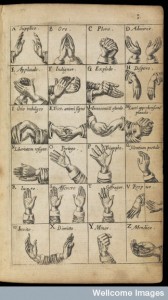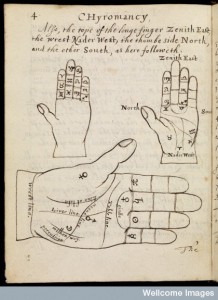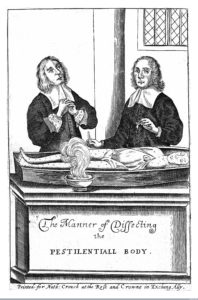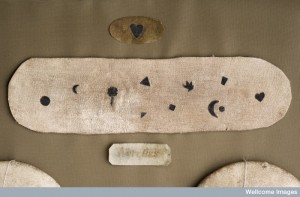
The anonymously authored Aristotle’s Book of Problems (1710) presented its readers with a series of questions and answers about the body and the natural world.1Some of these questions are very familiar, ‘why have some men curled hair, and some smooth?’, others are perhaps less familiar ‘why have men more teeth than women?’ why are ‘Eunuchs for the most part bandy-leg’d’ and why do the ‘Privities swell when we hurt one of our Toes’.2

Credit: Wellcome Library, London. Wellcome Images
The book was divided into sections that examined different areas of the body, one such section looked at the hands and their use. The author outlined why both men and apes had hands by explaining that ‘The Hand is an Instrument which a Man doth especially make use of, because many things are done by the hands, and not by any other Part’.3
Yet what the author really appeared to be interested in was the dexterity and nimbleness of the hands and how this varied from person to person. Having established that the hands were a tool, the author moved on to consider ‘Why are some men ambo dexter, that is, using the left hand as well as the right?‘4 As with so many characteristics of the early modern body, the authors explained that the tendency to use either one’s left or right hand was linked to the heat of the body.
‘By reason of the great heat of the heart, and for the hot bowing of the same? for that it is which makes a Man as nimble of the left hand as of the right; and without doubt such are of good complexions.’5
The author also considered the reason why some men were left-handed, and again this came down to the heat distributed around the body by the heart. He noted that some men were left-handed because ‘their heart sendeth out heat unto the right side but more unto the left’.6
Similarly the author emphasised that usually the fingers of the right hand were nimbler than those of the left which ‘proceedeth [sic] from the heat which doth predominate in those parts, which causeth great agility.’7
This was then another feature that was potentially linked to manliness. Heat was a defining feature of men’s bodies and the less heat their bodies contained the more likely it was that they would be effeminate and unmanly. Although this source doesn’t suggest that a lack of heat will make men left-handed it is suggested that an unusual or uneven distribution of this heat will cause a man to be left-handed rather than right, which is presented as the norm. Heat was often associated with the right, for example, the right hand side of the womb and seed from the right testicle were thought to create male children. Yet the author did emphasise the gendered nature of ambidexterity by discussing the potential for women to be ambidextrous.

Credit: Wellcome Library, London. Wellcome Images
‘Why are not Women Ambo-dexter as well as Men’ ‘Because as Galen saith, a Woman in health that is most hot, is colder than the coldest Man in Health? I say, in health, for if she have an Ague, she is accidentally better than a Man.’8
This is a particularly interesting suggestion – that disease, an ague, could make a woman’s body like a man’s, or even better.
Heat was related to the perfection of men’s bodies and their greater mental capacities. In this case the hottest women, it was argued, could not be as warm as the coldest man and so the ability to use both hands with nimble dexterity was reserved only for men. Similarly the traditional association of heat with the right side of the body encouraged the idea that the right hand was naturally more dexterous.
______________
1 Anonymous, Aristotle’s Book of Problems (London, 1710).
2 Ibid, pp. 4, 21, 108, 134.
3 Ibid, p. 32
4 Ibid.
5 Ibid
6 Ibid, p. 33.
7 Ibid.
8 Ibid, p.32
© Copyright Jennifer Evans, all rights reserved.





One thought on “Nimble Fingers”
Comments are closed.